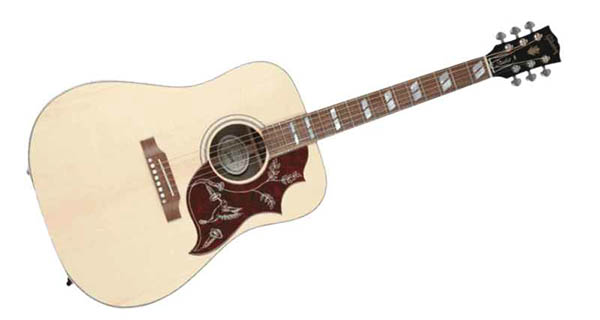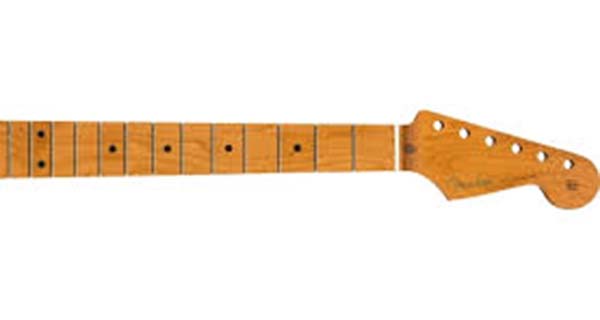Gibson Hummingbird Vs Dove [Difference & Which is Better]
Gibson, being one of the most renowned guitar manufacturers, offers two of its most popular models, Hummingbird and Dove. These guitars are known for their exceptional sound quality, craftsmanship & playability. Many guitar enthusiasts often find themselves in a dilemma when it comes to selecting the one that suits them better.
Both the Gibson Hummingbird vs Dove are iconic instruments that have been played by some of the most famous musicians in the world. But, what makes these guitars different from each other? Which one is better performing? We will delve deeper into the differences between Gibson Hummingbird & Dove. Try to help you to decide, which one is the best fit for your musical journey.

# Table of Contents =>
Comparison Table:
| Specifications: | Hummingbird | Dove |
| Back & Sides – | Mahogany | Maple |
| Neck & Neck Profile – | Mahogany and Round | Maple and Round |
| Top – | Sitka Spruce | Sitka Spruce |
| Pickups – | LR Baggs Element Active | LR Baggs Active electronics |
| Frets and Fretboard – | 20 & Rosewood | 20 & Rosewood |
| Bridge – | Traditional Belly-Up | Dove Signature |
| Scale Length – | 24.75” | 25.5” |
| Tuners – | Grover Rotomatic w/ Kidney Buttons | Nickel plated Grover tuners |
| Pickguard – | 0.06” Hummingbird | Dove Signature |
| Tuner Plating – | Gold | Nickel |
| Color & Finishing – | Natural, Vintage Sunburst, Heritage Cherry Sunburst, | Sunburst, Ebony, Natural, |
Main Difference Between Gibson Hummingbird Vs Dove:
a) Body shape and size:

Choosing between the Gibson Hummingbird and the Gibson Dove acoustic guitars, the body shape and size of each instrument can make a considerable difference in terms of sound, tone, playability, durability & many more. The Hummingbird features a larger body, with a more pronounced curve in the waist, which contributes to a fuller and richer sound.
This makes the instrument particularly suitable for strumming and producing complex chord progressions. The Dove has a more compact body with a flatter top, which produces a brighter and crisper sound that makes it ideal for fingerpicking and single note melodies.
b) Neck shape and design:

Comes with acoustic guitars, the neck shape and design play a crucial role in determining the sound, tone, playability & durability of the instrument. In the popular debate between the Gibson Hummingbird vs Dove, these factors come into play in distinguishing one guitar from the other.
The Hummingbird features a slim-taper neck shape that offers comfortable playability, particularly for fingerstyle playing. The Dove has a slightly larger neck & wider nut width, which can be more comfortable for players with larger hands.
The Dove boasts a unique design with its signature dove inlay, while the Hummingbird features a simple yet elegant appearance.
c) Number of frets:
The number of frets is an important factor to consider. Both the Gibson Hummingbird & the Gibson Dove have 20 frets. Which is a standard number for most acoustic guitars. Some players may prefer a guitar with more frets for extended range or special playing styles.
In terms of acoustic sound & tone, both the Hummingbird and Dove produce rich and warm tones. The playability & durability of these guitars are also top-notch, thanks to their high-quality construction & premium materials.
d) Pickups and electronics:

Comparing the Gibson Hummingbird and Gibson Dove, one important aspect to consider is the pickups and electronics. Both guitars are equipped with advanced hardware that enhances their tone & playability. The Hummingbird features an LR Baggs VTC pickup system that captures the guitar’s natural acoustic sound with ease, delivering a transparent & warm amplified sound.
The Dove features a LR Baggs pickup with an active preamp that delivers a brighter & more robust sound. Moreover, the Dove also has an onboard tuner and tone controls that allow players to shape and fine-tune their sound to perfection. While both guitars offer exceptional quality in terms of pickups and electronics.
e) Tonewoods used:
Gibson Hummingbird and Dove acoustic guitars, one crucial aspect to examine is the tonewoods used in their construction. Tonewoods play a significant role in an instrument’s sound, tone, and playability by determining the resonance, sustain, and balance of the guitar’s sound. The Hummingbird, renowned for its warm and full-bodied sound, features a solid mahogany back and sides and a Sitka spruce top.
In contrast, the Dove’s sound is characterized by a more balanced, brighter tone, thanks to its maple back and sides and a sitka spruce top. Both guitars offer excellent durability & playability, with their respective body shapes contributing to their playing comfort.
f) Playability and Durability:
Playability and durability are two key factors to consider. Playability refers to the ease with which the instrument can be played – the comfort of the neck, fretboard, and overall feel of the guitar. Durability refers to the guitar’s ability to withstand the rigors of regular use without showing signs of wear & tear.
The body and shape of the guitar are also important factors, as they can affect the sound and tone of the instrument.
g) Sound quality:

One of the most important factors that distinguishes the Gibson Hummingbird and Gibson Dove guitars is their sound quality. Both guitars create a range of tones that are distinct & notable. But the Hummingbird has a brighter and more resonant sound, whereas the Dove has a smoother, warmer & more mellow tone.
The Hummingbird’s sound is due to its larger body and unique X-braced top, which produces a brighter, punchier sound. The Dove’s sound is more enhanced by its flatter top, allowing it to produce a more balanced & smooth tone. The wood used in each guitar’s construction also can contribute to its soundscape.
h) Price:
The Hummingbird generally comes with a higher price tag than the Dove due to its more intricate design and high-quality materials used in its construction. However, while the price may be a deciding factor for some, it is important to consider the overall value of each guitar.
The Hummingbird’s sound, tone & playability are typically considered superior to the Dove’s, which may justify the higher price tag for some musicians.
Pros & Cons of Gibson hummingbird and Dove:
Each with unique features and characteristics, both guitars have their pros and cons. When it comes to sound, the Hummingbird is known for its punchy & versatile tone while the Dove produces a more mellow and balanced sound.
- In terms of playability, both guitars offer comfortable and smooth playing experiences. But some players may prefer the wider neck and fretboard of the Hummingbird.
- In terms of durability, both guitars are well-built with classic Gibson craftsmanship.
- The Dove’s unique design may be more prone to aesthetical wear & tear over time. When it comes to body shape, the Hummingbird features a square-shoulder design, while the Dove has a more rounded shoulder design. This can affect the sound projection and response of each guitar.
Price is also a factor to consider with the Hummingbird typically being more expensive than the Dove due to its added features and higher level of craftsmanship.
Best suited for play-style:
Both share similar features, including size, shape, and construction materials, but they differ significantly in terms of sound, tone, playability, durability, and price. While the Hummingbird is known for its bright, warm, and clear sound with a balanced tone, the Dove is famous for its tonality, depth & projection.
In terms of playability, the Hummingbird is best suited for players who prefer a lighter playstyle. While the Dove is more suitable for players who enjoy a heavier pick action.
Both guitars are highly durable and can withstand years of use. Which makes them ideal for players who don’t want to compromise on quality. The Hummingbird is comparatively more affordable than the Dove, making it a great choice for beginners and those on a tight budget.
In conclusion, both the Gibson Hummingbird vs Dove are iconic guitars with unique features that make them stand out. The Hummingbird has a more balanced tone and is suitable for a wider range of music styles, while the Dove has a brighter & more articulate tone. The choice between the two comes down to personal preference & the style of music being played.
FAQs –
Question 1: Why is Gibson Hummingbird so expensive?
Answer: The Gibson Hummingbird is so expensive due to its high-quality materials, craftsmanship, and reputation. The guitar is handcrafted with premium tonewoods such as Sitka spruce and mahogany, and its intricate inlay work and detailed finishes add to its aesthetic appeal.
The Gibson brand has a long-standing reputation for producing high-end guitars favored by many professional musicians, which contributes to its price point.
Question 2: What is so special about the Gibson Hummingbird?
Answer: The Gibson Hummingbird is a special acoustic guitar known for its distinctive sound and appearance. It features a square-shouldered dreadnought body shape, solid Sitka spruce top, mahogany back and sides, and a unique hummingbird and floral design on the pickguard.
The Hummingbird is also known for its warm, balanced tone and impressive sustain, making it a popular choice among musicians in a variety of genres.
Question 3: What is the difference between Epiphone Hummingbird and dove?
Answer: The main difference between the Epiphone Hummingbird and Dove is their design & construction. The Hummingbird has a square-shouldered body shape with a distinctive Hummingbird pickguard & ornate fretboard inlays. While the Dove has a rounded shoulder body shape and a simpler pick-guard design.
The Hummingbird has a solid spruce top and mahogany back & sides. While the Dove has a solid spruce top with maple back and sides. The Hummingbird also has a slightly brighter and more focused tone compared to the Dove’s warmer & more balanced tone.
Last Updated on July 9, 2023 by Perry Garner


